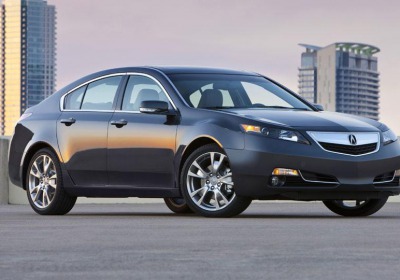Honda's future tech aims to mitigate pedestrian collisions
Thu, 29 Aug 2013
Honda showed off some of its smart future technology on Aug. 28 in Detroit. The company is hoping to reduce accidents between motorcycles and cars, and pedestrians and cars.
The company demonstrated its vehicle-to-pedestrian (V2P) and vehicle-to-motorcycle (V2M) technology that helps drivers “see” possible future collisions. We put see in quotes because the car's sensors actually do most of the work.
The system is based on cheap, little Wi-Fi implants that work through dedicated short-range communication or DSRC. The DSCR chips can be installed in cellphones, motorcycles and, of course, vehicles. Honda stressed that this plan is still in the early phases.
“While these are still experimental technologies, they provide a strong indication of the future potential for the kinds of advanced collision-sensing and predictive technologies Honda is developing to further reduce the potential for serious accidents, injuries and even fatalities,” said Jim Keller, chief engineer for Honda R&D Americas Inc. “These V2P and V2M systems are part of Honda's broad vision for smarter and safer vehicles and roadways.”
In practice, the DSRC chips talk to each other wirelessly, noting the speed, direction and other factors of each, checking to see if they will cross paths. At the demonstration, Honda had a few pedestrians with upgraded cellphones and a wired-up motorcycle on hand.
In the first demo, a Honda driver took us toward an intersection as a full-size van and motorcycle approached. Even though we couldn't see the bike, it showed up on the driver's head-up display placed on the dash in front of the steering wheel. When we got closer, it beeped loudly and the word “brake!” was displayed on the screen along with a picture of a motorcycle and an intersection. The Acura TL we were in didn't brake for itself, but we could easily see that coming into play in the future.
The second demo had us driving, at a pretty good clip, toward a staged intersection with two cars blocking our view of a walking pedestrian. At about 100 yards away, he showed up on the screen as one of those male bathroom-door figures, and at 10 yards the car beeped and displayed “brake!”
Additionally, the cellphone user also gets a beep and warning, to keep him or her from stepping into the intersection without looking.
Honda reiterated that these microchips are cheap and could be installed in any cellphone, car or bike. They can even pick up what the cellphone user is doing, displaying a headphone or telephone icon, letting drivers know the person is distracted.
The company didn't give a date for the release of this technology, and it would need a good helping of infrastructure to get started anyway. Also, who would want to drive around in a TL with three giant antennas protruding from the roof?
The tech is pretty exciting, though we could see a handful of problems in bigger cities where pedestrians outnumber cars: New York City, for instance.
Currently, Honda is a partner in the Connected Vehicle Safety Pilot Program conducted by the U.S. Department of Transportation and is testing eight Honda vehicles in Ann Arbor, Mich.
With all of these companies working on the same goal of eliminating accidents altogether, we can't help but think that the era of autonomous, or at least semi-autonomous, driving will be upon us before we know it. If that eases up traffic for the rest of us, we're all for it.
By Jake Lingeman



